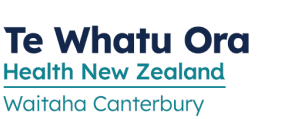What does it do?
Fentanyl patches are used to relieve strong pain.
Before you start
- Tell your doctor if you have bowel problems, sleep apnoea, if you have ever had a seizure, or have had a recent head injury.
- Tell your doctor if you are pregnant, planning to become pregnant, or breastfeeding.
How should you use it?
Use fentanyl patches regularly as directed. Apply the patch to a clean, dry, hairless area of skin (such as the chest, back or upper arm) every 3 days. When you have removed the old patch, apply the new one in a different place to prevent irritating your skin.
What if you forget a dose?
If you forget to change the patch, remove the old patch and apply a new one as soon as possible.
Can you take other medicines?
Some medicines available without a prescription may react with fentanyl including:
- sedating antihistamines (e.g. Phenergan®)
- cough suppressants (e.g. Duro-Tuss®, Benadryl Dry Forte®)
- some migraine medicines, such as sumatriptan (e.g. Sumagran Active®)
Tell your pharmacist or doctor about all medicines or treatments that you may be taking, including vitamins, herbal products (e.g. St John's wort) or recreational drugs.
What side effects might you notice?
| Side Effects | Recommended action |
|---|---|
|
Slow or shallow breathing, hard to wake up Seizures |
Tell your doctor immediately |
|
Confusion, hallucinations, mood changes Tummy pain (new or getting worse) |
Tell your doctor |
|
Constipation |
Take your prescribed laxatives. Tell your doctor |
|
Drowsiness, dizziness Nausea, vomiting, dry mouth or throat Itching, flushing, sweating Strange or uncontrolled movements Red or itchy skin where patch has been applied |
Tell your doctor if troublesome |
If you notice any other effects, discuss them with your doctor or pharmacist.
Other information:
- If fentanyl patches are not relieving your pain contact your health professional – your dose may need changing.
- Fentanyl patches may be used with other pain relievers (e.g. morphine, oxycodone).
- Make sure the patch does not come into contact with heat while you are wearing it (e.g. heat pads, hot water bottles, electric blankets, spa pools). Heat can cause too much fentanyl to get through your skin, and increases your chances of side effects.
- Dispose of fentanyl patches by folding the patch in half with the sticky sides together. Make sure to dispose of it out of the reach of children.
- Fentanyl may be addictive with long-term use.
- Long-term use of fentanyl may cause side effects such as less interest or trouble having sex, or changes in periods. It may also make some types of pain worse. Discuss with your doctor.
- If you have been taking fentanyl regularly for a long time, talk to your doctor before stopping.
This leaflet contains important, but not all, information about this medicine.
Prepared by the MyMedicines Committee at Christchurch Hospital, Te Whatu Ora - Waitaha, New Zealand. March 2023
For more general information about this sheet and its contents, see: What does a My Medicines sheet cover?
Te Reo Māori
Te Reo Māori information sheets supported by Health Quality and Safety Commission New Zealand
Web links for this sheet in different formats
Click on buttons to copy web addresses for this leaflet:
If your browser does not automatically copy these links use its copy command instead.
About My Medicines
My Medicines Patient Information Leaflets (PILs) contain important, but not all, information about the medicines they describe.
For more information about the sheets, see: What does a My Medicines sheet cover?
My Medicines is developed by a team at Te Whatu Ora – Waitaha. Our team is made up of doctors, pharmacists, and a non-medical person to help us keep to plain language. We also discuss our information with specialist health professionals or groups when needed

